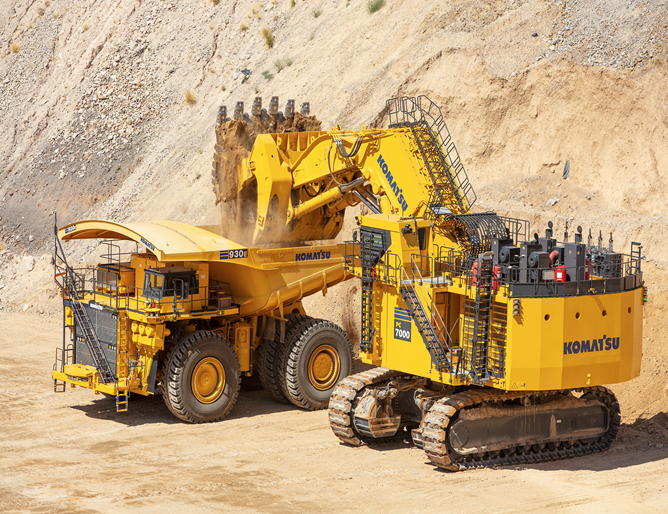In a global exclusive, IM Editorial Director Paul Moore recently interviewed Masayuki Moriyama, President, Mining Business Division at Komatsu Ltd, about the company’s progress so far in advancing teleremote, semi autonomous operation of large hydraulic mining excavators, which is the next big technology move in the transformation of surface mining fleets following the rollout of autonomous haulage. These machines will be used with both manned & AHS mining truck fleets

IM: Is Komatsu actively developing remote control (teleremote) hydraulic mining shovels?
MM: Komatsu is developing a semi-autonomous teleremote 700-tonne class PC7000 hydraulic excavator and aims to trial the concept machine at a customer site in 2021.
IM: Is the intention for the teleremote excavators to work with both manned truck fleets and autonomous truck fleets?
MM: Yes, we are aiming this at both manned truck fleets and autonomous truck fleets. In manned truck fleets, our guided spotting technologies support truck operators to efficiently spot at load locations. In autonomous fleets, the autonomous truck can spot at an exact loading position, helping reduce cycle times and increase productivity through the semi-automated teleremote operation and truck support system (guided spotting/autonomous) working together.
IM: What types of technology will assist the remote operator with situational awareness?
MM: To support remote operation, Komatsu is developing the following technologies that will help operators adapt to this new working style:
- 360° view monitor and machine display for enhanced visibility and situational awareness
- Semi-automated teleremote operation capabilities to reduce cycle times and combat operator fatigue
- Real time operator guidance and coaching with augmented reality (AR) technology based on data from sensors and cameras for productivity improvement
IM: Will it also have collision avoidance installed?
MM: As stated before, we are developing technologies to support operator awareness, such as 360°view monitors and machine displays and semi-automated operation capabilities, which all support increased awareness to help avoid issues whenever possible.
IM: Is this being done primarily for safety reasons but with productivity the other main focus?
MM: Our focus on developing semi-autonomous teleremote equipment is in part to remove people from harm’s way, yes, as well as to help improve shovel productivity rates through automation. Komatsu’s teleremote shovel aims to help customers increase their productivity through semi-automated operation and AR technologies, when compared to manual operation. We are also developing capabilities to enable a single operator to operate multiple shovels at the same time, for further productivity increases.
IM: What are the main technical and operator challenges that need to be overcome?
MM: It is important to help manage operator fatigue and reduced peripheral vision, challenges of tele-remote operation that can decrease productivity. With our developments, we are working to increase productivity compared to manned operation. From a productivity point of view, visualisation of the mining operation is essential. In a manned operation, one of roles of a shovel operator is giving instruction to trucks and other vehicles, and this is not changed in teleremote operation. Therefore it is necessary that remote operators can still visualise the mining operation. To do this, we are working with our colleagues at Immersive Technologies to provide virtual reality (VR) environments that provide shovel operators the same information they can get when they operate a shovel at site. Leveraging the capabilities of Komatsu Technology Companies including Modular Mining Systems, MineWare and Immersive Technologies, we are developing enhanced visualisation capabilities for our teleremote shovel and its surroundings. In addition, we are developing an operator coaching function that will evaluate the operator’s skill level and cycle times to provide real-time feedback to improve performance.
IM: Has the project reached trial stage and can you give any details? When is the technology likely to be formally launched?
MM: Development is nearing completion and as stated, we plan to trial the concept machine at a customer site in 2021.
The above image shows a manned PC7000 700 t class Komatsu hydraulic excavator loading to a Komatsu 930E AHS truck at the Komatsu Proving Grounds in Arizona











